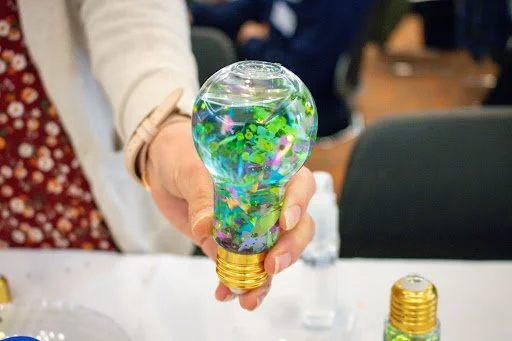The truth behind our food labels and the importance of science communication
Did you know there is DNA in everything that grows, including your food? Don’t feel bad if you didn’t know that – a lot of people don’t – but is that a problem? Well, maybe, because it could end up mattering in a lot of different ways – which is why science communication needs to up its game!
The whole purpose of science is to discover brand new knowledge, but the power of any scientist’s discovery is often determined by how well that discovery is communicated. Did you know that the fundamental laws of inheritance were discovered by Gregor Mendel, using pea plants? He is now known as the father of genetics because his work was so important to the field. But for the first thirty-four years after he published that work, it was only cited four times…he just published it and then moved on with his life. It took the world a long time to find out that one of the biggest genetic discoveries known to man had even been…discovered.
Think of everything we know and can do now thanks to our understanding of genetics. We know things like how children inherit different traits from their parents. We know how to test for genetic diseases, and in some cases, how to treat them. We can get kits in the mail, spit in them, and send them back to learn mountains of information about our ancestry. That all started with Mendel and his pea plants. Imagine where we’d be if he, or someone more inclined to public speaking, had shouted this discovery from the rooftops. Or less optimistically, where we’d be if no one had dug up his work despite his terrible lack of communication and started to build upon it?
But since scientists do communicate their work in scientific journals, like Mendel did, it’s likely that some other scientist, at least someday, will see it and work to build upon it. But what about all the non-scientists of the world? The people who are very unlikely to go read a scientific journal, or if they did, very unlikely to understand all the large and unnecessary words that scientists love to use?
Many of the people who are making policies or voting on them, or even just making personal decisions, could be doing it without a good understanding of why they’re doing it.
Take an example that fits in nicely with our genetic theme. A survey conducted in 2015 asked people if they were for or against a mandatory label on foods that contained DNA. Just over 80% of people were in support of this, suggesting that the majority of respondents were unaware that pretty much /all/ food contains DNA.
We might assume that the implication here is that the foods should be labeled so they can be avoided, because the idea of eating DNA sounds kind of, Frankenstein-ish, right? Well, only if one is not aware that DNA in food is very normal – otherwise food couldn’t grow! This matters in the larger debate about GMOs – genetically modified organisms. These are organisms, like plants, whose DNA has been modified. These modifications can result in things like a crop of food being more resistant to drought or pests.
Basically, genetically modifying a plant or crop like this helps us get rid of undesirable traits – like the crop dying when we don’t have enough water, or being susceptible to getting gobbled up by common pests. Getting rid of those traits helps us do things like grow more food, use less pesticides, etc. This is great news for the people who grow food and all the people who eat it! However, a lot of people are very wary of genetically modified foods, because again, it sounds very Frankenstein-ish – and who wants Frankenstein in their belly?
How GMOs actually work. Genetic modification of plants helps us meet our needs. Scientists have been using well-studied techniques borrowed from geneticists since the 1970’s to create genetically modified foods. Scientists can target all of the DNA in a plant, or just some of it, depending on what they are trying to do!
What hasn’t been communicated well is that humans have been trying to select for specific traits in plants and animals for a very long time, usually through selective breeding. That’s how we get things like seedless watermelons and morkies (aka a maltese-yorkie mix, possibly the cutest dog on the planet).
GMOs are doing exactly this – selecting the genes we want expressed in order to better meet our needs (or in the case of the morkie, our wants? Unless puppy snuggles are counted as a need). We’re just doing it in the lab, and much more precisely. It’s this lab bit that seems to make us uncomfortable – and that’s okay – but we need the kind of communication that can speak to those fears! Otherwise, we’ll be making and voting on policies about GMOs without understanding what they are and what they do.
An informed society is crucial for well-being and advancement, and not just for humans, for the earth and the other animals that live on it, too. We know that just telling people facts doesn’t change their minds, so we have to skillfully communicate information where it’s needed. It’s a big job, and it’s so important.































